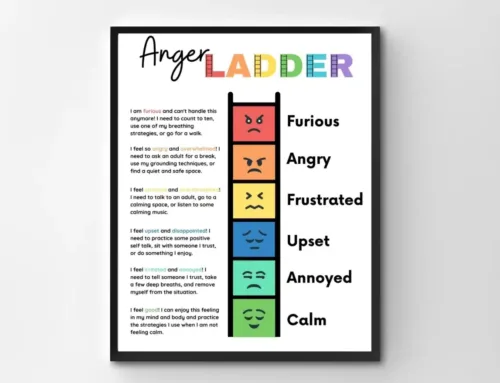Most people can learn to control anger with a clear method and short daily practice. This article answers what are the 5 keys to controlling anger and shows how small, repeatable steps protect relationships, health, and emotional health.
What are the 5 keys to control anger?
Breathe, Pause, Reframe, Communicate, and Plan work in one simple flow that you can use in any moment.
- Breathe lowers arousal so the body feels safe and the heart rate slows.
- Pause gives quiet time to notice tension, fear, or sadness before you speak.
- Reframe challenges hot thinking and replaces blaming words with facts.
- Communicate lets you express one clear request that reduces stress and hurt.
- Plan fixes one trigger so the same story does not repeat.
Link them in order: breathe → pause → reframe → communicate → plan.
Set a practice target of one minute, three times daily for the first week.
For an overview of core skills or if you still need help or assistance, see our Anger Management service page.
How do I use breath to calm fast?
Run a four by four cycle for two minutes to downshift your system and create self awareness.
Inhale for 4 seconds, hold for 4, exhale for 4, hold for 4. Repeat 8 to 12 rounds. Drop your shoulders, unclench your jaw, and slow your words as you breathe. If you can, sit, look at one point, and imagine a relaxing scene like ocean waves. Set phone reminders at 10 am and 3 pm for a one minute drill so the brain links breath with calm. Simple routines are in Meditation and Mindfulness Strategies.
How do I pause before I react?
Take a two to five minute time out and reset posture so you respond, not react.
Step away to a neutral spot, break eye contact, and take three deep breaths. Use a cue line: “Pause, breathe, choose.” Return with one point and a calmer tone. This short break helps you recognise danger signals in your body, reduces the urge to fight, and prevents the mad rush of words that leads to regret.
How do I reframe hot thoughts?
Challenge absolutes and check assumptions so thinking supports a better response.
Spot “always”, “never”, “must”, and “should” in your head. Replace them with specific lines and a balanced perspective. Swap mind reading for a test: “I will ask for clarity.” Keep three replacements ready for common triggers:
- “I can speak slowly and focus on one issue.”
- “I can admit my part and decide one next step.”
- “I can take two minutes, then return ready to solve the problem.”
Build this skill set with What Is Cognitive Behavioural Therapy (CBT).
How do I communicate without escalation?
Use I statements, one topic at a time, and reflective listening to keep respect.
Model behaviour, impact, and request in one sentence: “When the meeting starts late, I feel stressed because I have back to back calls. I need us to start on time or shorten the agenda.” Listen without interrupting, mirror with “What I hear is…”, and confirm next steps. Cap hard talking at 20 minutes and schedule a follow up if needed. Dialogue tools are in Resolve Conflict with Better Communication.
How do I plan to prevent the next outburst?
Fix one trigger with one small action and review progress each week.
Define the problem in one line, pick a 24 hour step, and review tomorrow. Add buffers before friction points, for example traffic, tight deadlines, or school pickup. Improve sleep, reduce late caffeine, and avoid putting off meals. Explore options in Stress Management Techniques.
What causes anger problems?
High load, low recovery, and hot beliefs drive fast reactions that feel hard to control.
Sleep debt, constant demands, and stimulants lower tolerance. Rigid rules about fairness or respect add fuel. Family patterns and past events teach a response that may have helped once but now hurts daily life.
Why do I lose my temper so quickly?
Short fuses come from fatigue, stress, and untested stories that your brain treats as facts.
Common triggers include interruptions, noise, and queue cutting. Poor sleep, blood sugar dips, and long commutes increase frustration. Keep a one week log and note what you notice just before you felt angry last time.
Is anger a mental health issue?
Anger is a normal emotion, yet repeating patterns can signal anger issues that benefit from support.
Anger often travels with anxiety, depression, trauma, or substance use. Patterns that include threats, property damage, or any violence need structured help. If self help stalls, reach out through Counselling Services or Contact.
How does anger affect the body and mind?
Threat systems surge while thinking systems slow, which narrows perspective.
Heart rate rises, muscles tighten, and focus locks on danger. Stress hormones disrupt sleep and mood, and frequent spikes increase long term health risk. See the stress pathway in How Prolonged Stress Creates Illness.
What are common anger triggers?
Fairness, respect, control, and overload top the list for most people across the world.
Examples include missed deadlines, traffic, interruptions, broken promises, and a person using blaming language. Map people, places, and topics that spike anger, then prepare one coping step for each cluster.
Are anger outbursts normal?
Brief flashes are common, while repeated blow ups signal risk and need action ahead of time.
Risk markers include shouting, door slams, threats, or withdrawal that damages relationships. Early use of the five keys helps kids, children at school, and adults keep control and protect connection.
What are the symptoms of anger issues?
Look for body, emotion, and behaviour patterns that repeat.
- Body: hot face, clenched jaw, tight chest, quick breath.
- Emotion: irritation, sadness, fear, or feeling upset.
- Behaviour: raised voice, sarcasm, blaming, or going quiet.
Recognise the pattern, then use the flow: breathe, pause, reframe, communicate, plan.
Can stress or anxiety cause anger?
High load and hypervigilance shorten the fuse and make small hassles feel huge.
Worry keeps the brain on alert, which makes a neutral story look like a threat. Reduce stress, add exercise, and schedule social support with a friend. Helpful starting points include Anxiety Management Strategies and What Is Anxiety.
What happens in the brain when I am angry?
The amygdala speeds up while prefrontal control lags, so quick reactions beat careful thinking.
Deep breaths and a brief pause help the thinking system re engage. Short, frequent drills make the response automatic and create a visible difference in how you deal with stress.
How do I know if I need anger management?
Check frequency, intensity, harm, and loss of control to decide on next steps.
Ask if outbursts happen weekly or more and if regret follows. Note feedback from work or home. If harm is present, show courage, admit the pattern, and get structured help through Counselling Services.
What quick steps help right now?
Use a two minute reset and one small change today.
- Take two deep breaths, then complete 4–4–4–4 for two minutes.
- Step away for two to five minutes, speak slower, and keep one point.
- Write a cue card with your script and keep it in your wallet or phone.
- Choose one change, for example leave five minutes early or cap talks at 20 minutes.
For practical tips, read 10 Anger Management Tips.
Conclusion
Controlling anger is a learnable skill. Breathe to cool the body, pause to create quiet time, reframe hot thoughts, communicate one clear request, and plan one small change for next time. With daily practice you build self awareness, protect emotional health, and strengthen relationships. If patterns persist or harm is present, get structured support through Counselling Services or reach out via Contact. Start today with one minute of deep breaths, three times a day.
Related Posts
Fees And Rebates
We offer cost-effective solutions that can fit within your budget. The insights and skills acquired in therapy can continue to positively impact mental and emotional health long after the therapy sessions have ended, making it a truly worthwhile investment in yourself.















